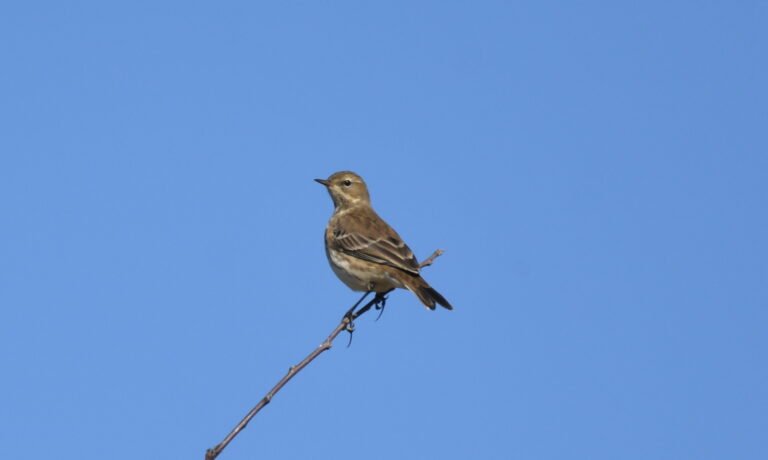The Fieldfare (Turdus pilaris) is a member of the thrush family Turdidae. It breeds in woodland and scrub in northern Europe and Asia. It is strongly migratory, with many northern birds moving south during the winter. It is a very rare breeder in Great Britain and Ireland, but winters in large numbers in these countries.
It nests in trees, laying several eggs in a neat nest. Unusually for a thrush, they often nest in small colonies, possibly for protection from large crows. Migrating birds and wintering birds often form large flocks, often with Redwings.
It is omnivorous, eating a wide range of insects and earthworms in summer, and berries in winter.
The Fieldfare is 22–27 cm long, with a plain brown back, white underwings, and grey rump and rear head. The breast has a reddish wash, and the rest of the underparts are White. The breast and flanks are heavily spotted. The sexes are similar.
The male has a simple chattering song, and a chattering flight and alarm call.
The English common name fieldfare dates back to at least the eleventh century. The Anglo-Saxon word feldefare perhaps meant traveller through the fields.Alternatively, it may be derived from Old English fealu fearh, literally grey piglet.
The species was described by Linnaeus in his Systema naturae (1758) under its current scientific name. The name Turdus pilaris comes from two separate Latin words for thrush.
The Fieldfare has an extensive range, estimated at 10 million square kilometres (3.8 million square miles), and a large population, including an estimated 28 to 48 million individuals in Europe alone. The species is not believed to approach the thresholds for the population decline criterion of the IUCN Red List (i.e., declining more than 30% in ten years or three generations), and is therefore evaluated as Least Concern.





